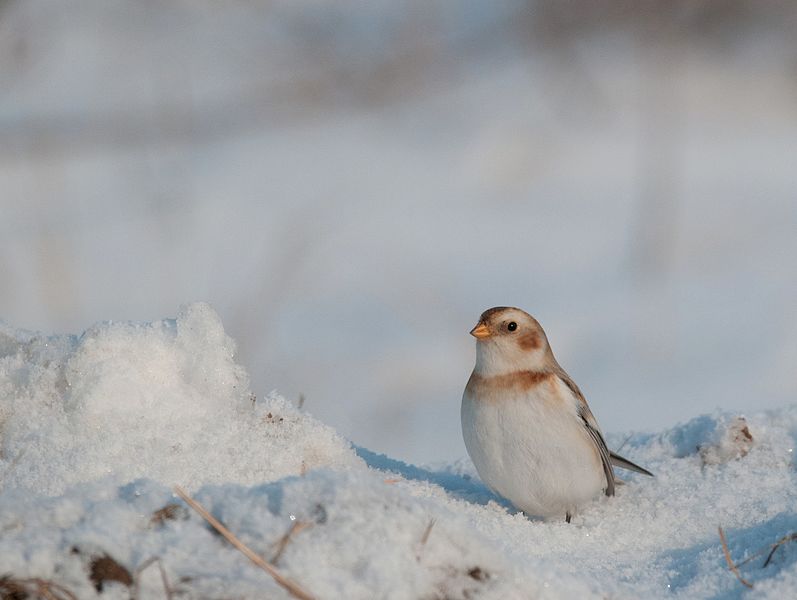Offer
Provide additional details about the offer you're running.
Provide additional details about the offer you're running.
Provide additional details about the offer you're running.

Feature Image By U. S. Fish and Wildlife Service – Northeast Region [CC BY 2.0 (http://creativecommons.org/licenses/by/2.0)], via Wikimedia Commons
When we think about birds that are built for winter we often think of species such as the snowy owl, northern cardinal or blue jay. While these are all fantastic examples of wonderful (and colourful) birds we can spot during the winter months, there are one small and hardy species that adorns our area seeking refuge from the bitter cold of the Arctic each year.
The snow bunting is small and tough. Breeding in the high Arctic, these birds are no stranger to the discomfort of bitter cold temperatures. In fact, many males return to their Arctic breeding grounds well ahead of the females, leaving southern locations as early as the beginning of April to scout prospective territories ahead of the breeding season.
As we stated, this bird spends its summers up north. Way up. During the nesting season, they are found in Northern Quebec, the Northwest Territories, Yukon, Alaska, and the Arctic. During the fall and winter months, they begin their migration to slightly warmer climates, landing in much of the lower Canadian provinces and northern US states.

Female Snow Bunting in Winter. By Charles J Homler (Own work) [CC BY-SA 3.0 (http://creativecommons.org/licenses/by-sa/3.0)], via Wikimedia Commons
When in their home range during the nesting season, these small songbirds nest among frozen rocks, locating inviting crevices where they can raise their young. Given the extreme temperatures in the area, the female will seldom leave her young during the incubation period, relying heavily on their mates to feed them.
While in our neck of the woods, they can be found in open, grassy areas and spending their time along the shores of lakes and oceans.
As with any bird with the word ‘snow’ in their name, these birds sport a traditionally white plumage, with a little flair of colouring. While the head, nape, breast, belly, rump and outer tail feathers are all pretty well white in colouring, the males have black wingtips and central tail feathers with a black bill to match. In addition to that, they can be seen with a faint red band across their chest and a yellowish bill during the winter months.

Male Snow Bunting. By Graham Racher from London, UK (IMG_8842) [CC BY-SA 2.0 (http://creativecommons.org/licenses/by-sa/2.0)], via Wikimedia Commons
These birds are fairly quiet with regards to songs but do have quite the repertoire of calls they will utilize in a number of different situations. Ranging from a low warble, some rattles, buzzes and “chew” noises, you will really need to be paying attention to locate one of these birds by ear.
High Quality Blend

